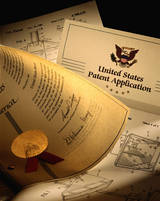Patents: Intellectual Property Audits, Part 1 of 4
 IP Audits are lengthy, to say the least. Most interviews take about half a day and go into great detail with top management. The IP audit report consists of action items for the company and it’s attorneys to work on. Items on the audit report can take up to three years to complete. The intellectual property audit contains the four main areas: patents, copyright, trademarks and trade secrets.
IP Audits are lengthy, to say the least. Most interviews take about half a day and go into great detail with top management. The IP audit report consists of action items for the company and it’s attorneys to work on. Items on the audit report can take up to three years to complete. The intellectual property audit contains the four main areas: patents, copyright, trademarks and trade secrets.
There are several questions to ask when dealing with patents in the IP audit process. First, you must figure out if the company has any inventions or works that are patentable. Patents can be anything from light accessories to an automotive tool to a business model. If no patentable inventions are found during the search, focus your attention on the other types of intellectual property listed above. If you do come across some inventions to be patented, work with your attorney to start the application process. The next step is regarding questions about both ownership and disclosure.
Who owns the patent rights to an invention? Answer…the individual inventor. If the inventor hires someone to create a prototype or design software the inventor may not be the sole owner of the patent. Getting an attorney to write an assignment of rights or draft a work for hire agreement may clear up your issues. As long as a person is specifically hired to create something or solve a specific problem (and it is all in writing–with signatures!) you should be safe.
The next patent issue to address when completing an IP audit is disclosure. Under U.S. patent law, an inventor has one year after the first public disclosure of an invention to get a patent application on file, or else the invention will be deemed to have entered the public domain. The US Patent and Trademark office defines “public disclosure” to include publication, sale, offers for sale and public use. Once realizing there is a patentable invention, the auditor must determine if the one year filing period is still effective. Keeping in mind it does take some time to file the actual application. You may need to discuss cease-and-desist letters with your client for future claims that could be brought up against them. It is always a great idea to follow your competitors applications and keep your attorney handy to ensure cease-and-desist letters will not show up in the mailbox.
Stay tuned for Copyrights: Intellectual Property Audits, Part 2 of 4, coming soon!
Leave a Reply